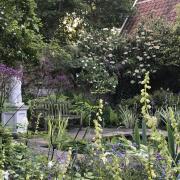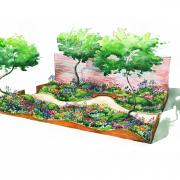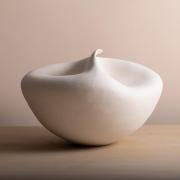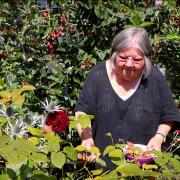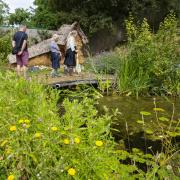May is an important month in the gardening calendar when the Chelsea Flower Show takes centre stage, drawing audiences from near and far for a glimpse of garden glamour.
New and established garden designers unveil their visions with high hopes of taking home RHS Gold. As gardeners, we get to see what’s in, what’s not, and what we would like to grow, both in the garden and out on the vegetable plot.
Show manager Gemma Lake promises this year’s spectacle will engage with important global themes, environment, community and education.

'This year we're working closely with all our garden designers to bring the most sustainable gardens we can to the show. They're using eco-techniques, low carbon materials and processes that are not only reducing their impact on the environment, but also reducing our waste at the end of the show.'
If you’re unable to attend this year’s event, you can still bring a bit of Chelsea to your garden. Later this month many garden lovers will be sharpening their clippers in preparation for the Chelsea Chop. This is a pruning method that tends to be done towards the end of May, around the same time as The Chelsea Flower Show, hence its name.
Cutting back herbaceous plants, such as phlox, rudbeckia and sedums, creates bushier plants with more blooms, four to six weeks later in the season. At this time of year plants can become leggy; this technique helps keep perennials in check.

Also, new stems will grow stronger and be less susceptible to bowing over due to the weight of the flower. This will help plants to bloom simultaneously, leaving your beds and borders awash with colour and structure.
A simple rule of thumb is to reduce perennials by up to a third in height. Reducing further will restrict the plant in being able to successfully bloom. Before you carry out this task it’s important your cutting tools are clean and sharp, as this will prevent plants being left open to possible infection.
Once you’ve finished, give your chopped displays a water and a general feed, just to keep them on top form. If you usually find some of your perennials overshadow other displays as we move through the season, this technique will level the playing field and allow all displays a chance to shine.

If you haven’t done this before, suddenly cutting back your precious plants before they’ve even flowered can be a nerve-racking thing to do. So, if you’re unsure, try cutting back only half the plant’s stems leaving the remaining one untouched. That way, you’re staggering the flowering period. Half your plant will bloom as normal, but as those blooms fade the stems that received the Chelsea Chop will be stepping up to give you a second display. Or, if you have two or more of the same plant, give one plant the Chelsea Chop and leave the other one untouched.
A final tip, many of your fresh cuttings can be used to increase your flower stock by simple propagation. For example, if you’ve just cutback your sedum, use a dibber and carefully insert the cut end of a cutting into a small pot of fresh compost, water and place in your greenhouse to grow on.






